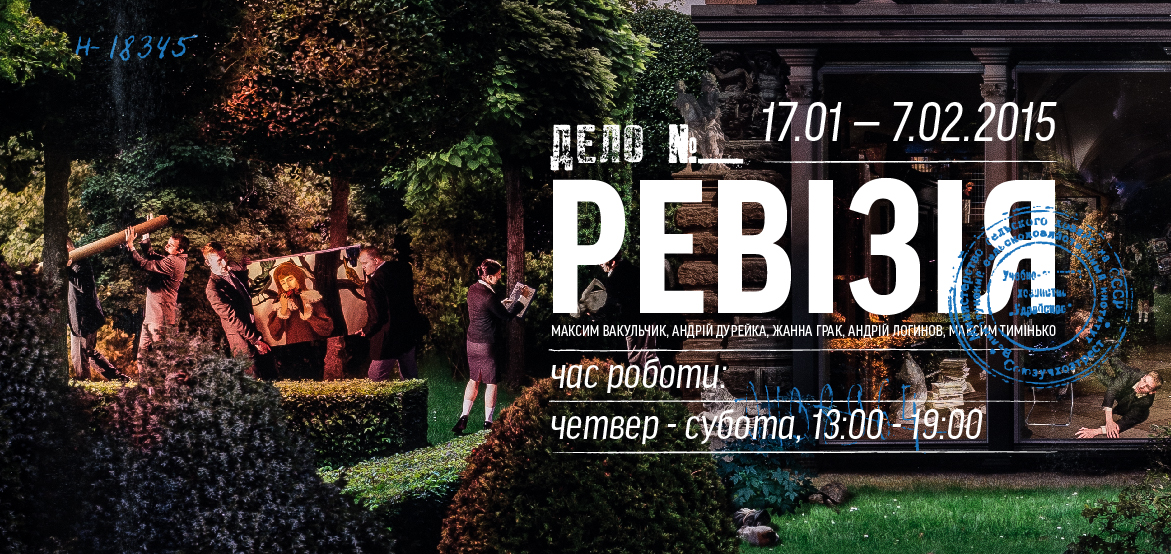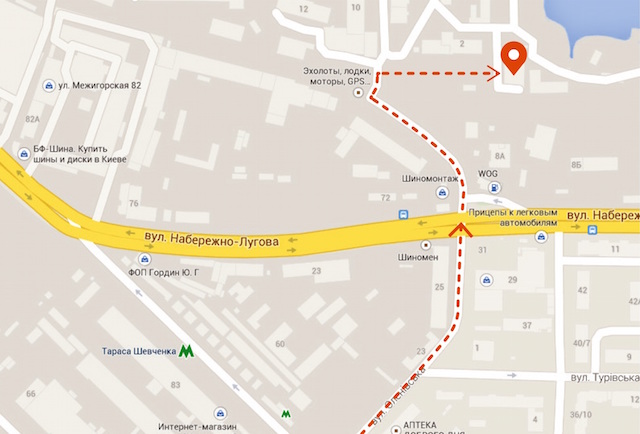REVISION

17 January 2015 — 5 February 2015
The exhibition runs from 17 January till 7 February 2015, Thursday through Saturday from 10am to 6pm. Entrance free.
A monumental photographic triptych depicts a process of revision of an imaginary museum collection, where the artists themselves become the protagonists of their own work – they act as museum keepers and revisionists of art history. Multilayered five meter long photo collages consist of over two thousand images, either photographed specifically for this project or found as ready-mades on the Internet and photoshopped into the picture. Three separate parts of the project portray various spatial and temporary aspects of the same episode. One of the collages gives a panoramic view of the location: a luscious garden with a Neo-classical building in its midsts. The second one depicts the process that is happening inside the building, while the third one, which in its turn consists of five sections, portrays each individual character of the story after the process of revision comes to a close.
The overall project pushes the boundaries of visual conventions of the photographic medium and acquires cinematographic and even literary features. Similarly to a movie, a camera shows a general panoramic view and then zooms into a specific interior. The points of conversion with literature stem from the work's narrative mode. In general, a principle difference between a verbal story and a visual portrayal lies in the fact that the first one unfolds sequentially, while the second one depicts simultaneity. A photo or a painting catches the moment in time. Language conveys its message in a linear fashion. This generalization, of course, receives some deviations at various times in the history of European art. Thus, a Baroque painting, for example, tries to narrate a story rather then simply depicting a certain point in time. The triptych stretches the boundaries of visual conventions even further beyond Baroque story-telling. Furthermore, the exhibition arrangement emphasizes cinematographic and literary modes of the project: the collages are exhibited in such a way that the viewer cannot grasp their depiction in one glance but has to discover its individual parts sequentially, similarly to uncovering the narration in a book by turning its pages.
This postmodern game with visual conventions continues on the level of the subject matter. In the “interior” episode of the triptych the artists conduct a revision of a museum collection overflown with masterpieces: objects by Andy Warhol, Jeff Koons, Nam June Paik, Joseph Beuys as well as canvases and sculptures by various other artists from Rafael to Malevich to Jackson Pollock are featured in these collages. However, the scenes do not exactly resemble a standard museum inventory process. Overly dramatic poses and gestures of the protagonists who literary crash precious paintings and sculptures into pieces hint at the urgency and the anxiety of the action. The drama continues outside where, on one hand, there is a group of suspiciously looking men in black congregating around a black BMW, which used to be popular with the post-Soviet mafia of the 1990s, and on the other hand, there is a huge fire to burn the artworks which are carried out of the museum. Tempestuous clouds borrowed from a Romantic landscape genre, the museum space depicted through the Renaissance one-point perspective, the garden that resembles Versailles, opulent vegetation on the foreground of one of the collages that references the Netherlandish school of painting – all these visual citations from the history of European art reinforce the iconoclastic theme of the triptych. Upon further inspection, it becomes apparent that the so-called revision features a plethora of ironic details that render the whole scene uncertain and make it look like a robbery or a hasty departure with the removal of some incriminating evidence rather than a regular museum inventory.
The triptych can serves as a delightful postmodern game of guessing the visual citations. However, its topic also resonates with the current social and political turmoil in Ukraine which is undergoing the process of transformation. What can we do with traumatic historical episodes? Should we expel them from our social consciousness and memory, burning them out, literary or metaphorically? Or should we acknowledge them and find the ways to reconcile the past with the present? Even when we have to choose what needs to be cleared out, who has the right to decide on the important and the superficial in history? The protagonists of the triptych do their job with such enthusiasm and determination that in the end they find themselves standing in complete ashes and ruins. Thus, the project forces the viewer to consider the boundary between revision and vandalism, the latter of which can easily lead to the scorched land unfit for generating a new bright world.
Address: Naberezhno-Luhova street, 8 (metro station Tarasa Shevchenka, after crossing Naberezhno-Luhova street follow the orange way signs IZO).
